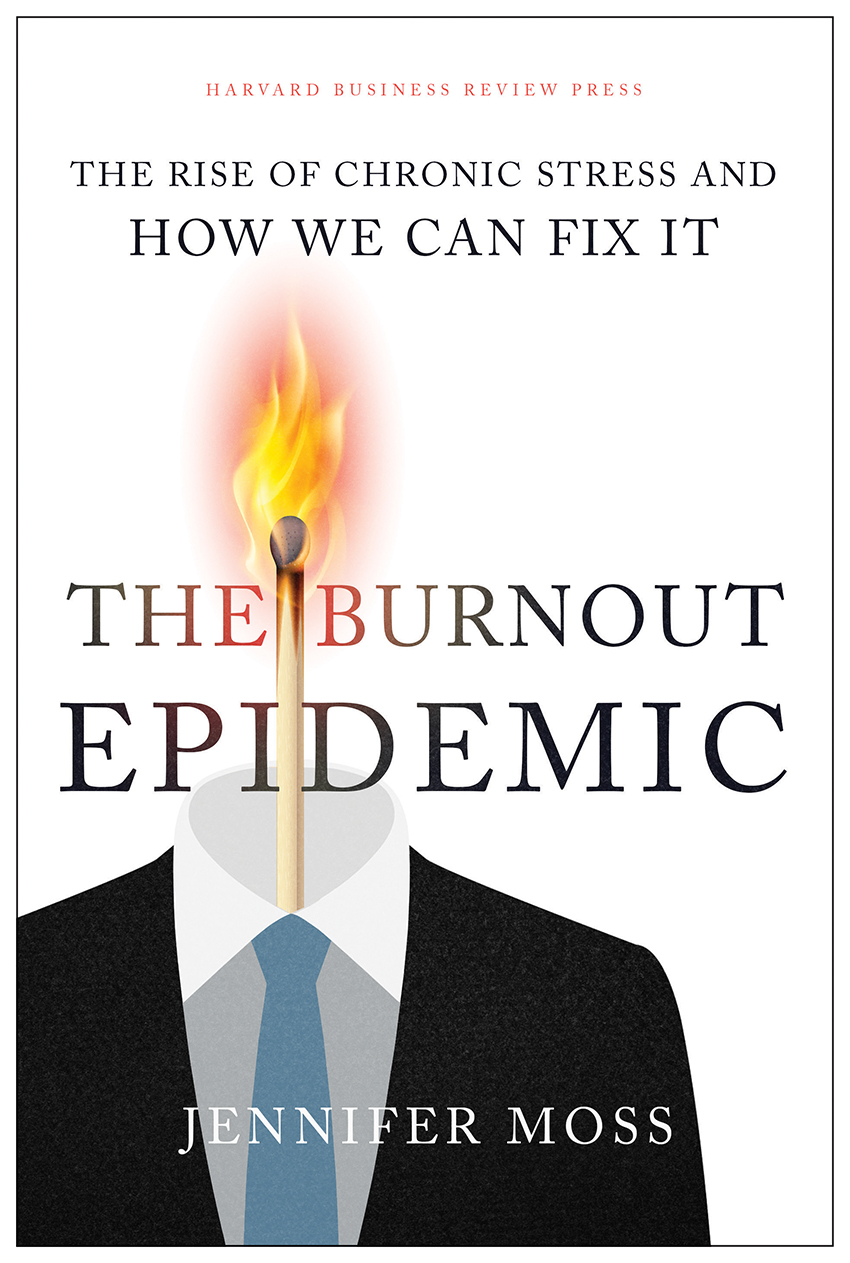By Ray Bert
The Burnout Epidemic: The Rise of Chronic Stress and How We Can Fix It, by Jennifer Moss. Boston: Harvard Business Review Press, 2021; 288 pages, $30.
After decades of discussion, the World Health Organization in 2019 adopted a definition of occupational burnout as a syndrome with specific markers related to energy depletion or exhaustion, increased mental distance or negativity toward one’s job, and reduced professional efficacy. With that definition in mind, occupational “burnout” may seem at first like a straightforward concept, not terribly difficult to recognize or understand. After all, especially if we count ourselves, how many of us don’t know someone whom we’d describe as burnt out at one time or another?
But the tricky thing is that methodically combating such a widespread problem first requires much better than a colloquial “I know it when I see it” mindset. In The Burnout Epidemic, journalist and internationally recognized happiness expert Jennifer Moss explains carefully and in great detail what a successful approach could look like.
The book posits that individual self-care — including services offered with the best of intentions by many companies to reduce employee stress— is simply insufficient to prevent burnout. Instead, the deeper, systemic, organizational causes must also be tackled.
Most academic research identifies six primary causes of burnout: workload, perceived lack of control, lack of recognition, poor relationships, lack of fairness, and a values mismatch.
Given that list, Moss argues, it should be clear that simply giving employees tools or perks to manage stress will seldom be enough. A simple example: Giving employees additional time off, such as half-day Fridays, sounds great on the surface and may well be appreciated. But unless companies also adjust workloads accordingly, the pressure stays the same, and they’re really just shifting when people work. In the book, Moss also examines many other similar “good intentions gone bad.”

Another straightforward example of how organizational policy drives — or can prevent — burnout: telework advocates have long extolled the potential benefits of working from home on employees’ well-being and productivity … and were long ignored by many companies. Then the pandemic arrived and forced most of even the most recalcitrant firms to give it a try. Now, many are shifting to more flexible scheduling even after offices reopen in recognition of what (some) employees want — or need — to be happy and productive.
The Burnout Epidemic also offers leaders with the authority to drive organizational change key suggestions, including remembering to recognize burnout in themselves and coming to terms with not getting everything right the first time. Moss also recommends gathering data by measuring burnout using established survey tools (don’t try a do-it-yourself approach, she counsels), staying curious about new things, and making use of smaller and more efficient project teams. She tops it off with a basket full of ideas tied to being a more empathetic leader — from simply actively listening to employees, which builds a culture where employees feel safe to voice concerns or problems, to encouraging informal “storytelling” about handling work-related stresses to allowing people to learn from one another and bond over shared challenges.
Packed with research, anecdotes, strategies, and success stories that — especially in light of the last 18 months — almost can’t help but resonate, The Burnout Epidemic is a timely and essential reminder that great workplaces don’t just happen. They are purpose-built every bit as much as a great product is.



